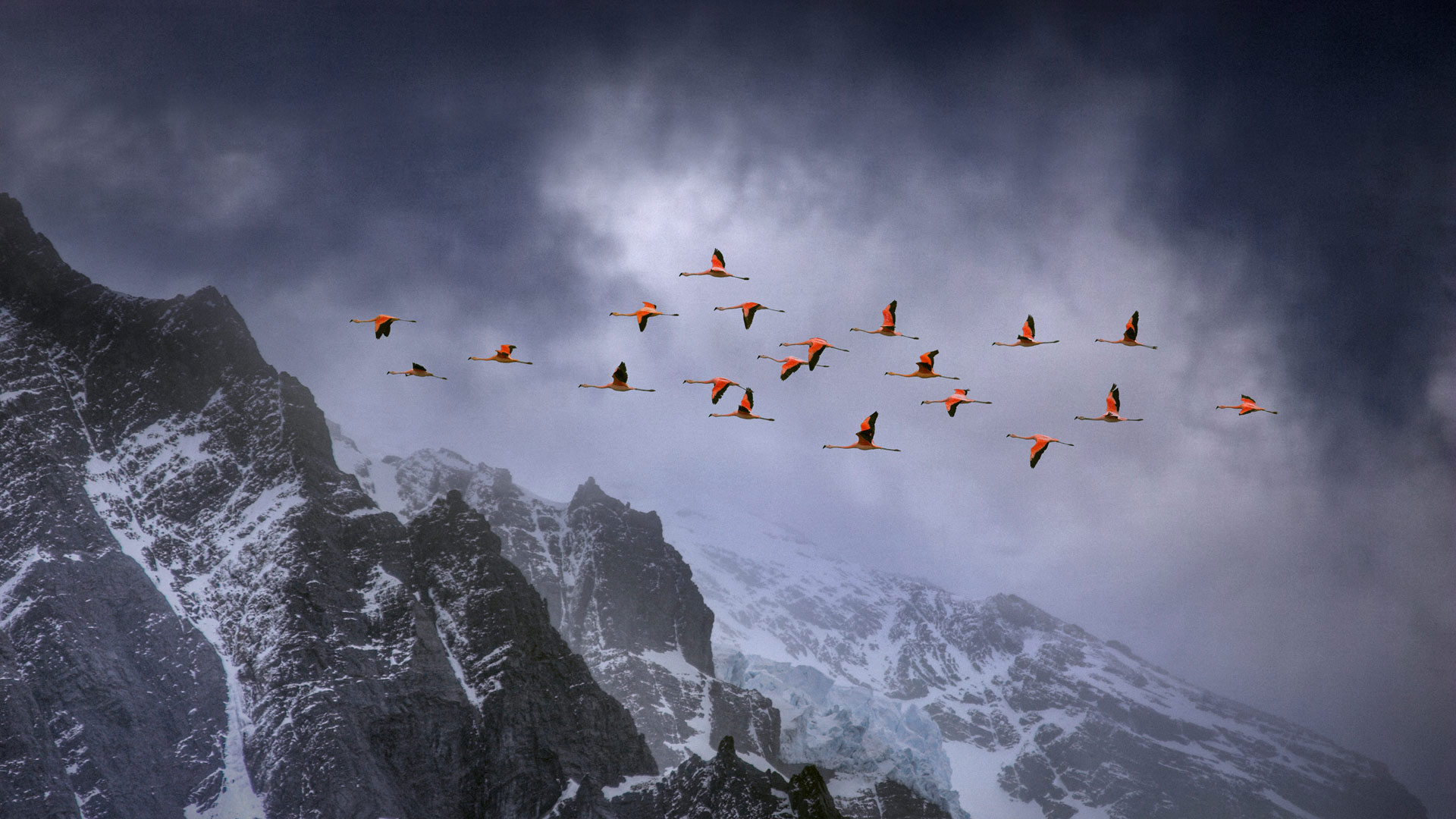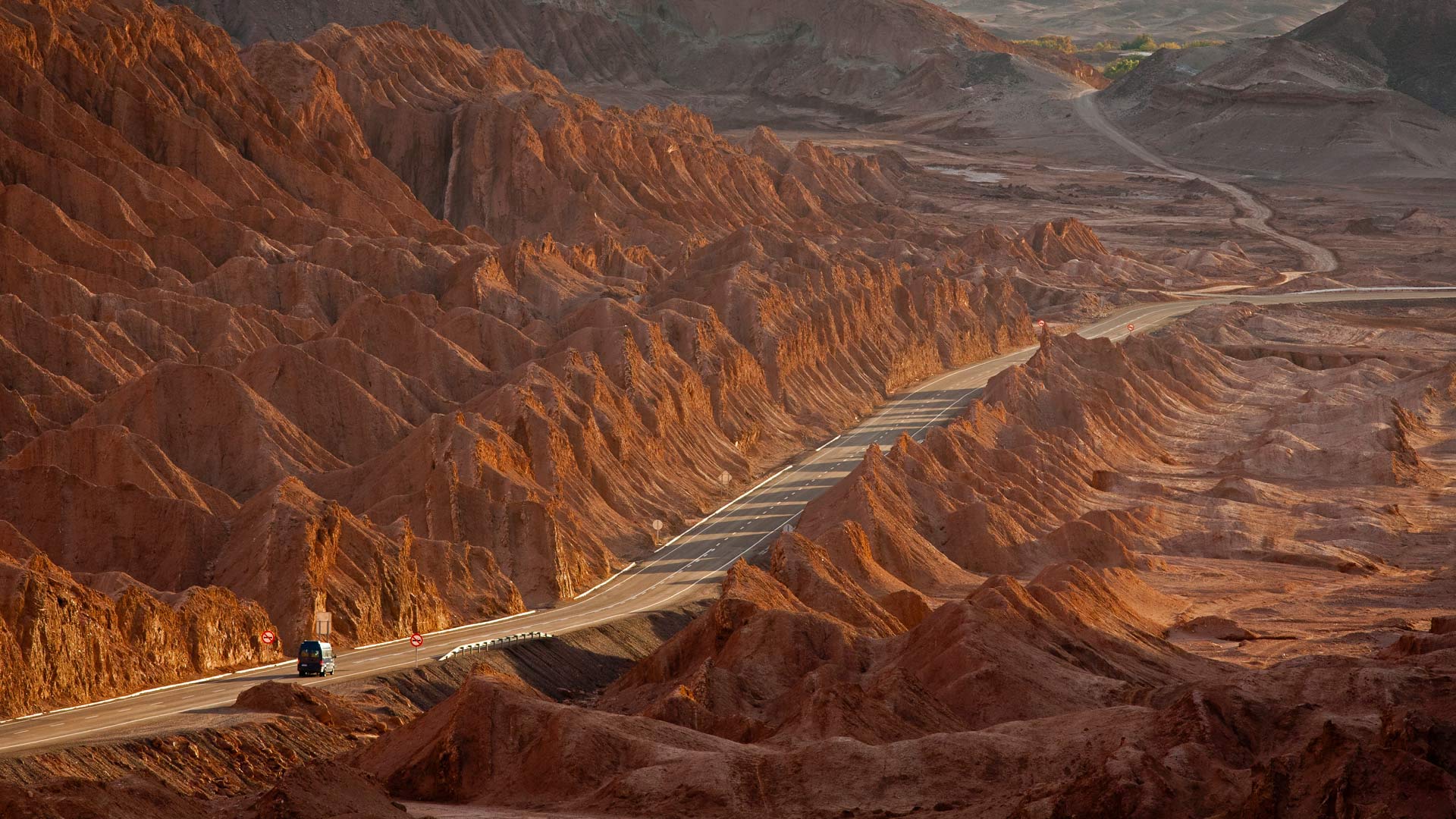Portrait of poet Pablo Neruda projected on building, Santiago, Chile (© Mario Tellez/Anadolu Agency/Getty Images)
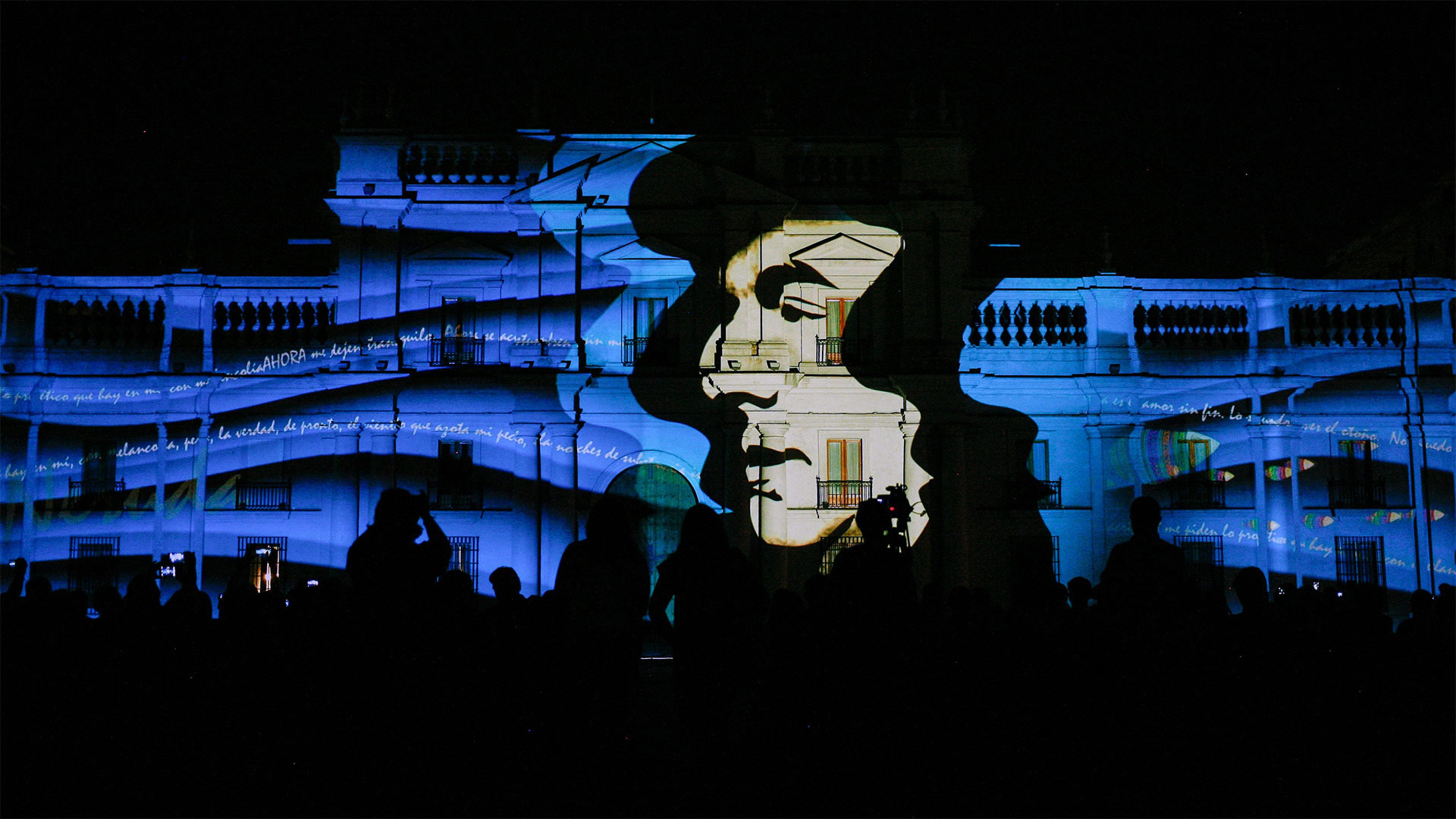
Portrait of poet Pablo Neruda projected on building, Santiago, Chile (© Mario Tellez/Anadolu Agency/Getty Images)
It's World Poetry Day
For World Poetry Day, we're seeing the stylized visage of poet Pablo Neruda projected on a building in his native Chile. World Poetry Day was established by UNESCO to acknowledge 'that individuals, everywhere in the world, share the same questions and feelings.' Neruda, a Nobel laureate generally held up by Chileans as their national poet, made his early mark with famously racy love poetry. But his palette of questions and feelings evolved, expanding into surrealism, epic history, and radical politics. His death in 1973 after a bout with cancer was mourned publicly by Chileans—in defiance of newly installed dictator Augusto Pinochet, whom many Chileans link to Neruda's untimely passing.
For World Poetry Day, UNESCO encourages embracing the tradition of reciting poetry for an audience—so keep your eyes peeled for poetry slams and other gatherings of language lovers sure to take place around the world today. Care to prepare? Brush up on your poetry knowledge with today's quiz.
拉帕努伊国家公园中阿胡汤加里基的摩艾石像,智利复活节岛 Moai statues at Ahu Tongariki in Rapa Nui National Park, Easter Island, Chile (© blickwinkel/Alamy)
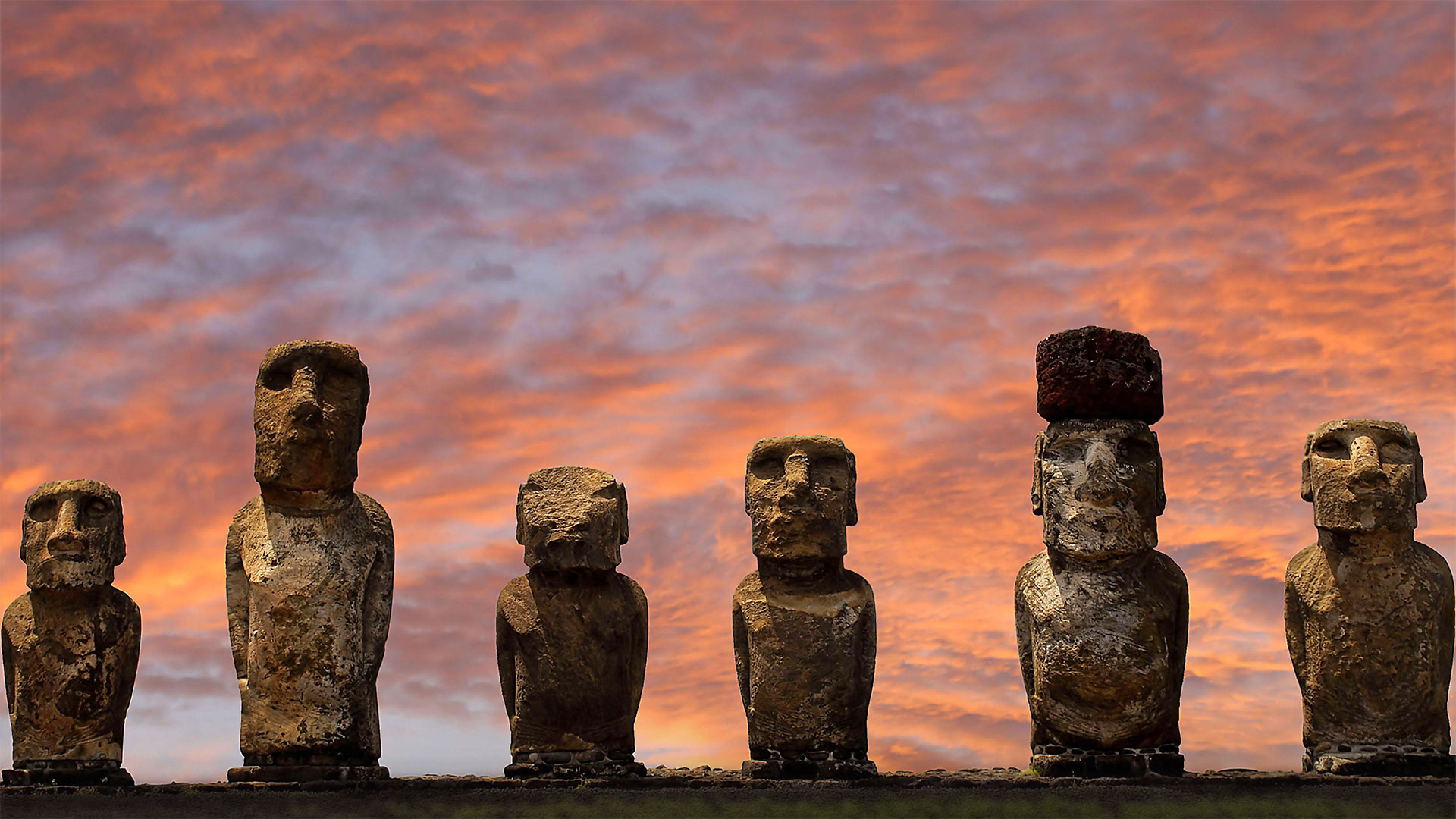
拉帕努伊国家公园中阿胡汤加里基的摩艾石像,智利复活节岛 Moai statues at Ahu Tongariki in Rapa Nui National Park, Easter Island, Chile (© blickwinkel/Alamy)
The 'moai' you know
Roam around the tiny, remote Easter Island and you'll find almost 900 of the stern stone faces called moai. They seem ancient as the pyramids, even a little alien, but they were actually sculpted between 500 and 800 years ago from compacted volcanic ash that's as terrestrial as it comes. You're seeing six of the 15 moai that stand on Ahu Tongariki, the largest ahu (stone platform) on the island. These statues were toppled in the 18th or 19th century along with other moai island-wide for reasons not fully known to scholars, though earthquakes or possible tribal infighting are postulated. The statues were later buried by a tidal wave and lay in ruins until the 1990s when they were excavated and placed back on the ahu.
Though scholars still debate how and why the moai were constructed and moved into place, it's known that they represent the ancestors of the Rapa Nui, an isolated and hardy culture that still celebrates its uniqueness. Visit Easter Island during the first two weeks of February and you'll find yourself in the midst of Tapati Rapa Nui, a festival that revives islander ceremonies of song and dance, as well as sporting events like ocean canoeing, horse racing, and haka pei (high-speed sledding on banana tree trunks).
The Villarrica volcano in Chile on September 2, 2018 (© Cristobal Saavedra Escobar/Reuters)
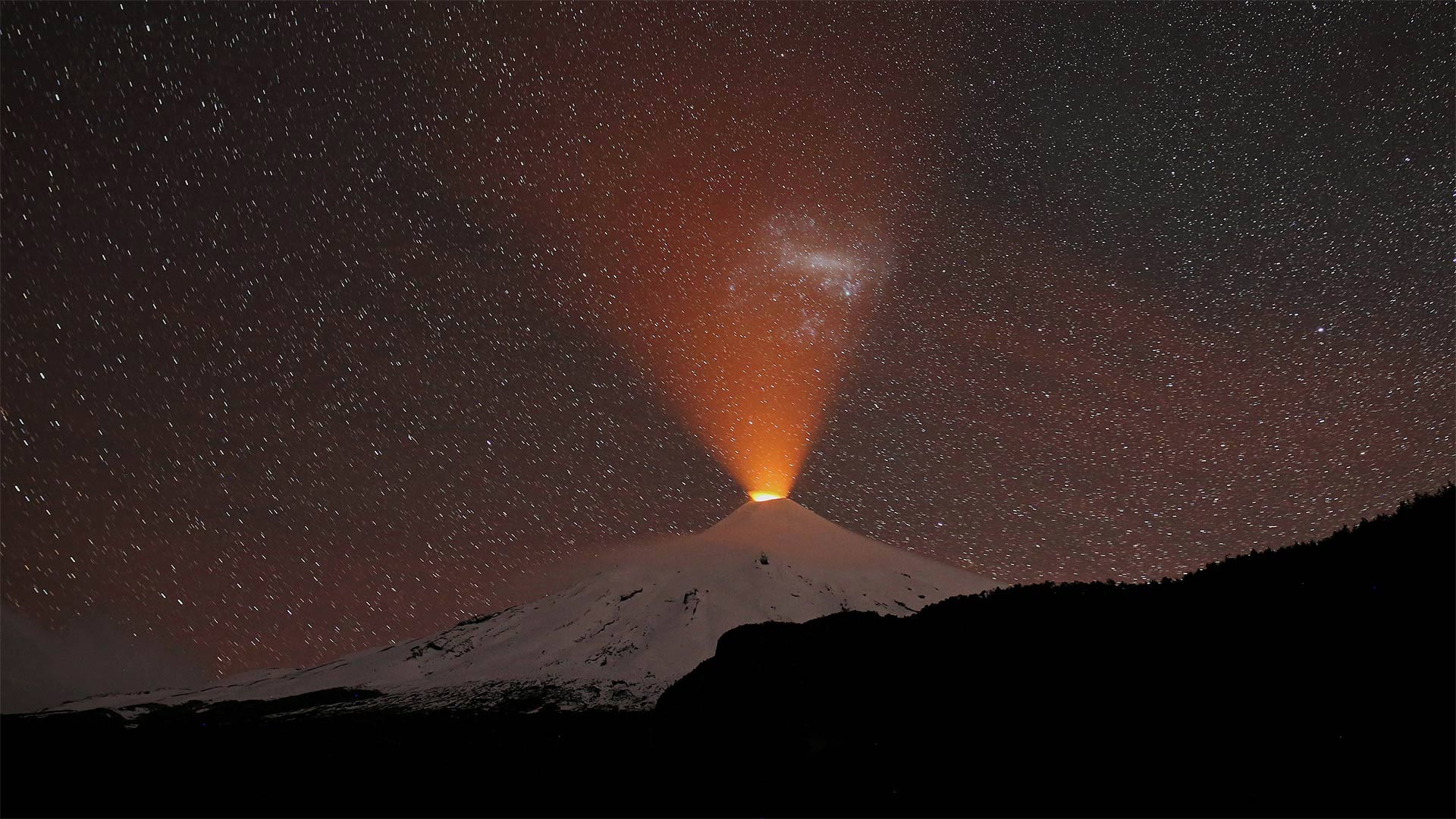
The Villarrica volcano in Chile on September 2, 2018 (© Cristobal Saavedra Escobar/Reuters)
Celebrating Chile's Independence Day
That's the Villarrica volcano providing fireworks for our observance of Chile's Independence Day celebrations—called Fiestas Patrias—taking place September 18 and 19. The second-most active volcano in South America, Villarrica is known to the indigenous Mapuche people as Rucapillán (Devil's House). This photo was taken on September 2, 2018, alarming nearby residents, but it wasn't nearly as destructive as other relatively recent eruptions, like one in 2015 that prompted authorities to evacuate thousands of people.
Chile's Fiestas Patrias take place each year just before the spring equinox in the Southern Hemisphere, so the Independence Day celebrations double as a kind of spring festival. With most schools and workplaces on a weeklong vacation, people observe the holiday by attending rodeos, going to the beach, visiting family, and—above all—indulging in traditional Chilean food and drink. It's said that Chileans gain 10 pound or more during the Fiestas Patrias. Most gorge themselves on empanadas de pino, which are small pastries filled with minced meat, sautéed onions, hard-boiled egg, olives, and sometimes raisins. The empanadas are typically eaten with a variety of grilled meats from barbecue stands called asados. It's all washed down with local red wine or chicha, which in Chile is a sweet, distilled grape- or apple-based beverage that is almost exclusively drunk during the week of Fiestas Patrias celebrations.
